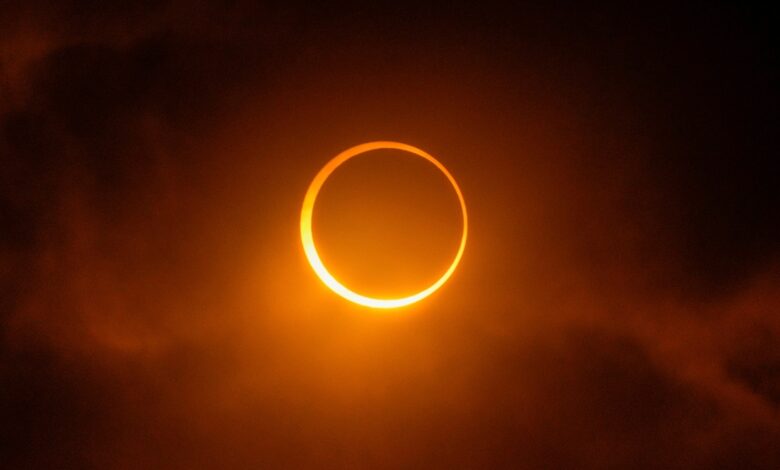Last solar eclipse of 2024: ‘Ring of fire’ blazes over South America, stargazers watch in awe | Trending

Oct 03, 2024 12:56 PM A ‘ring of fire’ solar eclipse was visible in Chile and Argentina. Spectators enjoyed the celestial event, which was the year’s final solar eclipse. Parts of South America like Chile and Argentina witnessed a “ring of fire” solar eclipse on October 2. A solar eclipse occurs when the moon casts a shadow on earth and the sun is blocked. The moon moves past the sun during an annular solar eclipse in Puerto San Julian, Argentina, Wednesday, Oct. 2, 2024.(AP) Spectators in Chile’s Easter Island and Argentina’s Buenos turned their eyes up to watch the spectacular celestial event, the final solar eclipse of the year. This particular solar eclipse is called a “ring of fire” as some of the Sun is visible through the eclipse forming a blazing ring even as its centre is blocked out the Moon. The fantastic phenomenon lasts only a few minutes before the “ring of fire” transforms into a crescent. Take a look at the incredible solar eclipse here: A solar eclipse is observed from Tahai archaeological monument area in the Rapa Nui national park managed the Mau Henua native community at Easter Island, Chile October 2, 2024. REUTERS/Ivan Alvarado(REUTERS) One should not observe an eclipse through the naked eye as it can damage the retina. Notably, this “ring of fire” solar eclipse differs from a total solar eclipse where the moon completely blocks the sun. While solar eclipses are not rare — two to four of them occur every year, according to NASA — the ring of fire is only visible in certain parts of the world. (Also read: ‘Ring of Fire’ solar eclipse today: What is it and when will it occur next?) The moon moves past the sun during an annular solar eclipse in Puerto San Julian, Argentina, Wednesday, Oct. 2, 2024. (AP Photo/Natacha Pisarenko)(AP) The moon passes the sun on the day of an annular solar eclipse, in Las Horquetas, Santa Cruz, Argentina, October 2, 2024. REUTERS/Agustin Marcarian(REUTERS) The eclipse visible only to those within the “path of totality” which was only between 265 to 331 kilometres wide this year. For those outside this area, a partial eclipse is visible with the sun appearing like a bright yellow crescent in the sky. A partial eclipse was also visible in Antarctica, Hawaii, Mexico, New Zealand, Brazil and Uruguay. When is the next solar eclipse?You may have missed the spectacular “ring of fire” in the sky this year but next year will witness two more such solar eclipse. The first, on March 29, will be visible across Europe, Asia, Africa and North and South America. The second, solar eclipse will be seen on September 21 in Australia and Antarctica. A year after that, stargazers will see a total solar eclipse on February 17, 2026. (Also read: The oldest known solar eclipse occurred 6000 years ago: The Rig Veda carries mention of it) Get Latest Updates on… See more News / Trending / Last solar eclipse of 2024: ‘Ring of fire’ blazes over South America, stargazers watch in awe







